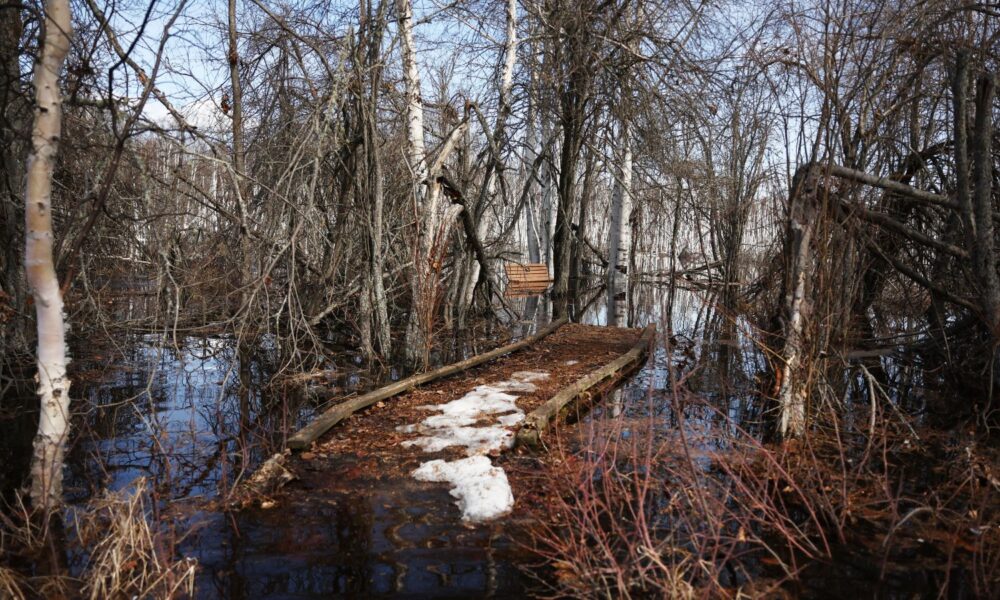The longevity of naturally occurring carbon sinks, like those in Earth’s forests, is a key part of all modeled and projected pathways to net-zero. Without the considerable carbon absorption capacity of our lands (and oceans), we’d currently have much more CO2 in the atmosphere and an accelerated timeline of warming.
But the complexities of the interactions between the land and atmosphere, especially in a rapidly changing climate, are challenging to model, leading to uncertainty around the magnitude and persistence of this critical carbon sink. I dug into this complexity with my energy colleagues in the context of their recent analysis of pathways for how the US can meet its goals to cut heat-trapping emissions 50%-52% below 2005 levels by 2030, and achieve net zero emissions no later than 2050.
That analysis assumed the U.S. land sink stays fixed at current levels, given the high level of uncertainty shown in recent studies around whether emissions absorbed by the US land sink will increase or decrease. Here, I’ll dig into why we made that choice, and provide an overview of the history and disruptions to the land carbon sink as well as some thoughts about its future.
A brief history of the land carbon sink
Every year, globally, land-based ecosystems remove roughly 30% of human emissions from the atmosphere, slowing both the accumulation of atmospheric CO2 and increases in global temperature. In North America, the land carbon sink between 2004 and 2013 offset roughly 39% of fossil fuel emissions, but varied substantially year to year.
This carbon absorption occurs through photosynthesis, where plants use water, light, and the nitrogen-rich enzyme RuBisCo to turn CO2 into sugars and other carbon compounds. While this process occurs at the very small scale of an individual cell within an individual leaf, the cumulative impact of this process over time and across ecosystems is enormous.
Land based ecosystems have also historically emitted carbon through processes like decomposition, harvest, and combustion in wildfire, but overall have absorbed more than they release. As human emissions increase, the sink strength of these ecosystems has continued to expand due to CO2 fertilization, but their capacity to absorb carbon is not unlimited.
Climate change threatens the strength of the carbon sink
Climate change disrupts many of the processes that govern the land carbon sink and can vary substantially by region, creating conditions that decrease photosynthesis and increase carbon losses. Drought and extreme heat can limit the ability of plants to photosynthesize, as can highly variable rainfall. Similarly, global increases in vapor pressure deficit (VPD), a variable that captures the thirstiness of the atmosphere and is projected to continue rising, have already reduced vegetation growth globally.
These same environmental changes can also increase carbon losses from land-based ecosystems. Insect outbreaks, aggravated by climate change, can both decrease carbon absorption by killing trees and increase carbon emissions through the decomposition of those same trees. Drought and extreme heat can also dry out vegetation, priming it to burn, even in systems that are not historically adapted to wildfire. Rising VPD has been linked to a near doubling of burned area in forests of the western US, and an increase in the area burned at high severity, both of which can lead to huge emissions from forests. While some of these emissions may be reabsorbed relatively quickly as forests regrow, combustion of soil carbon, which can take decades to centuries to accumulate, can result in net carbon emissions, particularly in boreal and arctic ecosystems, where the majority of ecosystem carbon is below ground. In Canada, a combination of factors including a large mountain pine beetle outbreak and record setting wildfires, have transitioned their forests from carbon sink to carbon source.
Thawing permafrost, the vast stores of ancient carbon that remain frozen year-round beneath Earth’s arctic and boreal biomes, similarly represents a threat to the historical strength of the land carbon sink. Both gradual and abrupt thaw can release huge amounts of methane and carbon dioxide into the atmosphere, further exacerbating warming.
The future of the land carbon sink
The future of the land carbon sink will be determined by the net effect of policies and investments that can 1) enhance land-based carbon absorption and storage and 2) reduce the magnitude of carbon losses from ecosystems. These include strategies like reforestation, wetland restoration, and proactive forest management.
Using data from complex earth system models (ESMs), the most recent IPCC assessment concludes that the global land sector is very unlikely to switch from a source to a sink before 2100. However, when focused on just North America, the Second State of the Carbon Cycle Report highlights that ‘the net land sink within North America is projected to either remain near current levels or decline significantly by the end of the century.’ This difference can be partially explained by the global versus regional scope of each statement, but the inner workings of models may play a role too. While these models are the best available and continue to improve in complexity, they still do not fully capture many of the climate feedbacks outlined above. Wildfire is only represented in roughly half of the models used and permafrost is only rarely represented, both of which are large contributors of emissions in North America.
Together, this suggests that current models may be underestimating the extent of emission reductions required to achieve certain temperature targets. This does not undercut the conclusions drawn from any given model, but rather increases the urgency with which we must phase out fossil fuels and adapt to coming climate change. At the same time, policies and investments to help protect and enhance the existing land sink remain urgent and vital, not just for climate purposes but also for biodiversity and ecosystem benefits and for benefits to the lives, livelihoods, and health of communities.

